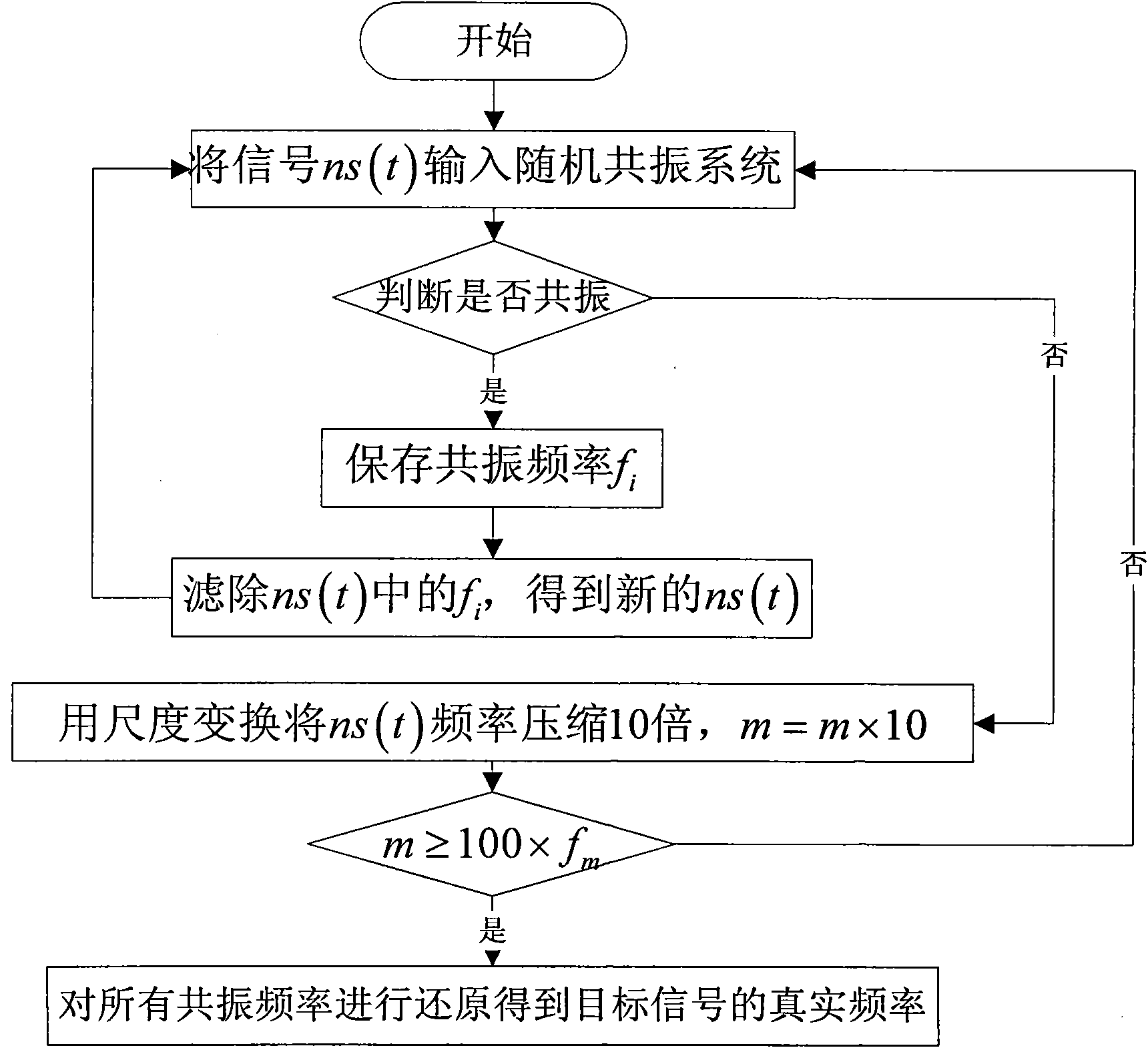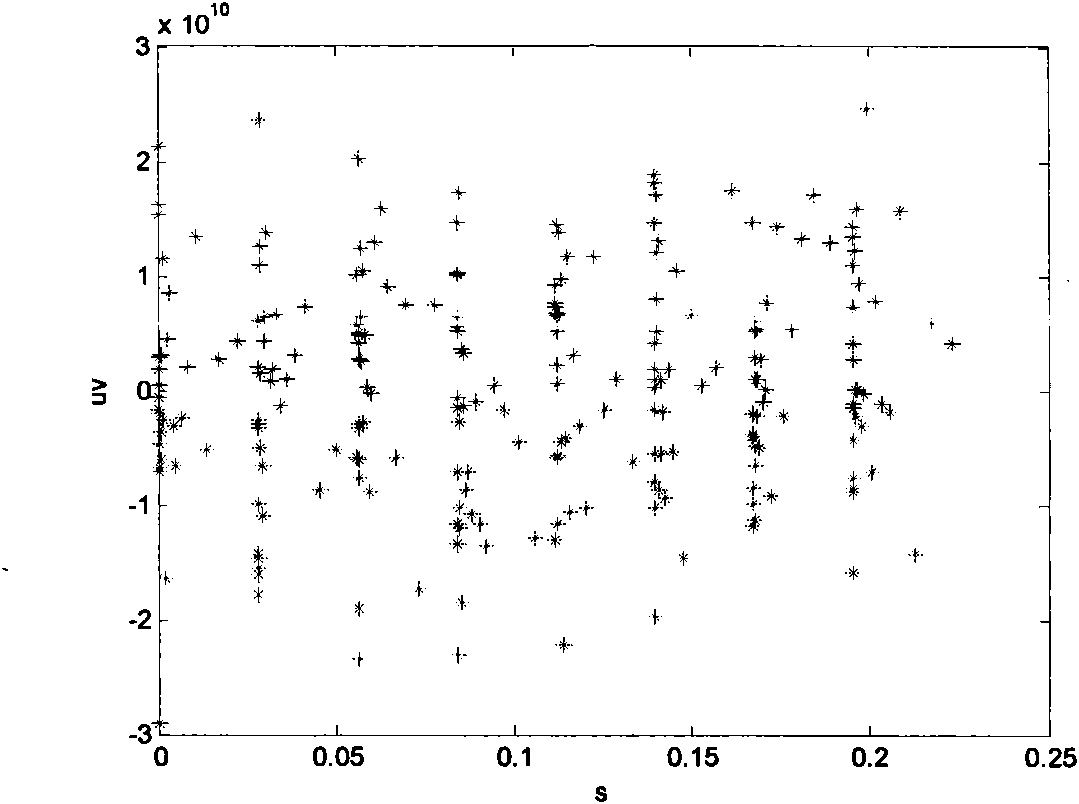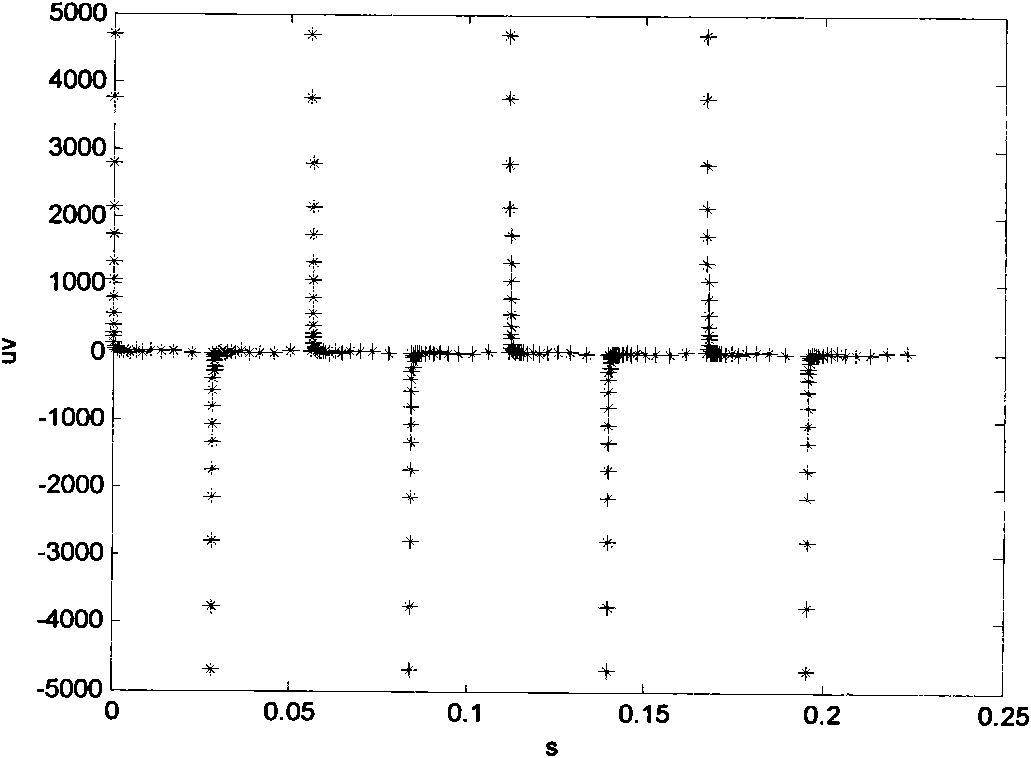Method for detecting stochastic resonance transient electromagnetic weak signals
A weak signal detection and transient electromagnetic technology, applied in the direction of electromagnetic field characteristics, can solve the problems of weak signal detection, failure to keep up with the transition rate, difficult random resonance, etc., to achieve short data acquisition time, shortened acquisition time, and data acquisition The effect of volume reduction
- Summary
- Abstract
- Description
- Claims
- Application Information
AI Technical Summary
Problems solved by technology
Method used
Image
Examples
Embodiment Construction
[0034] The embodiment of the stochastic resonance transient electromagnetic weak signal detection method is used in the geological field survey of a certain place, and the transient electromagnetic detection receiving signal is ns(t), ns(t)=s(t)+n(t), s (t) is the target signal, s(t)=∑A i cos(w i t) is a plurality of frequency signals, wherein: A i is the target signal amplitude, which has little influence on the system and is not considered, w i is the target signal frequency, w i The range is 1Hz~100000Hz. n(t) is Gaussian white noise with intensity D≈48.5. Since the received signal from transient electromagnetic detection is a noisy signal under a strong noise background, the energy of the target signal is very small compared to the noise, so the noise intensity is determined by the received content The strength of the noise signal is similar, and the strength of the noise-containing signal in this example is 48.5. The stochastic resonance system used is
[0035] ...
PUM
 Login to View More
Login to View More Abstract
Description
Claims
Application Information
 Login to View More
Login to View More - R&D
- Intellectual Property
- Life Sciences
- Materials
- Tech Scout
- Unparalleled Data Quality
- Higher Quality Content
- 60% Fewer Hallucinations
Browse by: Latest US Patents, China's latest patents, Technical Efficacy Thesaurus, Application Domain, Technology Topic, Popular Technical Reports.
© 2025 PatSnap. All rights reserved.Legal|Privacy policy|Modern Slavery Act Transparency Statement|Sitemap|About US| Contact US: help@patsnap.com



